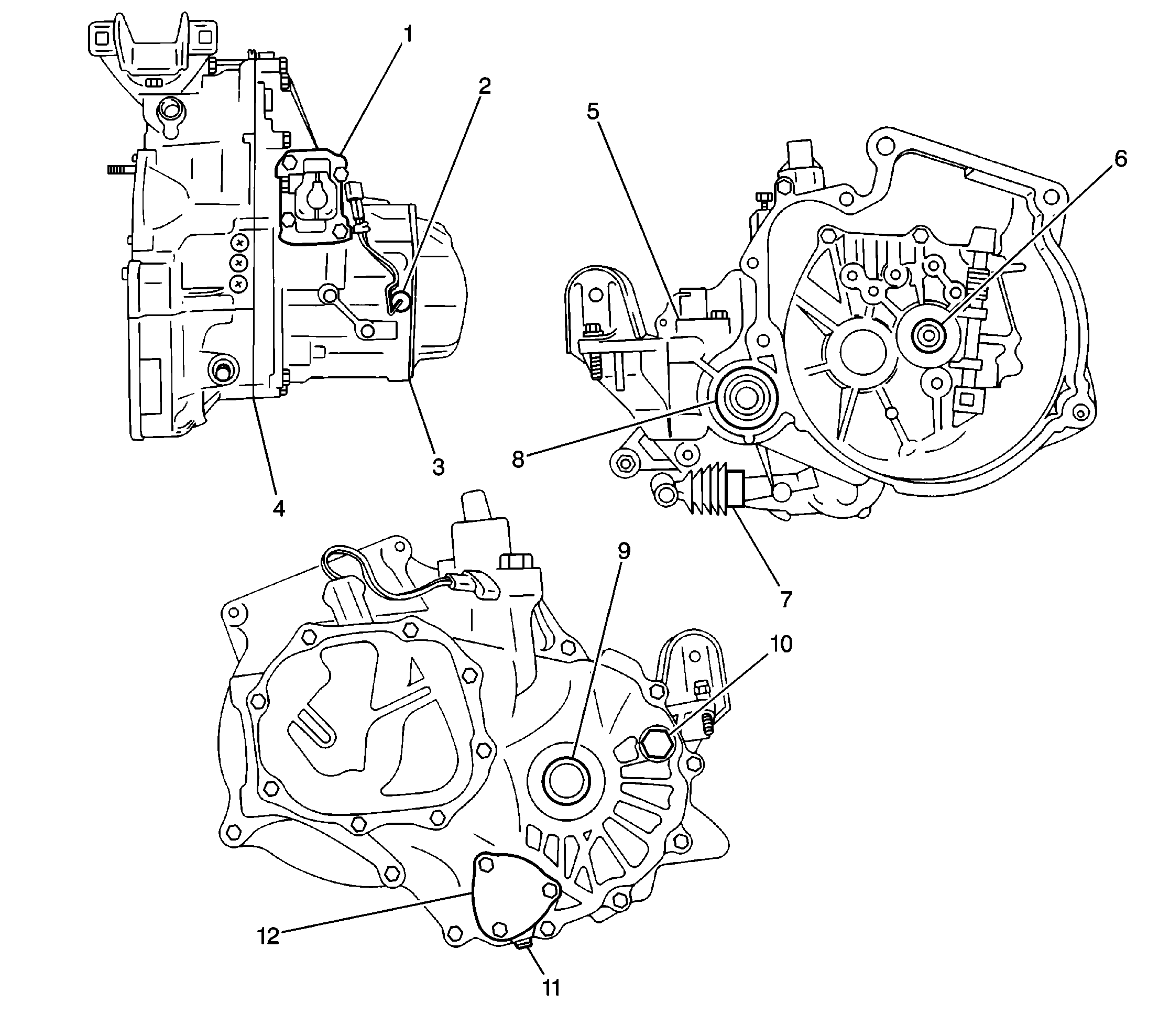
The cause of most transaxle oil leaks can usually be located with the transaxle
in the vehicle. The transaxle case components are constructed of aluminum and separated
into the following pieces:
| • | The transaxle side cover (3) |
If a leak exists between (4) the left case and the right case, remove
the transaxle from the vehicle in order to repair the leak. Most other leaks
may be repaired with the transaxle in the vehicle. Use the following three
methods in order to locate manual transaxle oil leaks:
General Method
- Verify that the leak is transaxle oil.
- Thoroughly clean the suspected leak area.
- Drive the vehicle for 24 km (15 miles) or until normal
operating temperatures are reached.
- Park the vehicle over clean paper or cardboard.
- Turn the ignition switch to the OFF position and wait for approximately
30 minutes.
- Inspect the paper for oil spots.
- Perform the necessary repairs.
Powder Method
- Thoroughly clean the suspected leak area with solvent.
- Apply an aerosol powder or baby powder to the suspected leak area.
- Drive the vehicle for 24 km (15 miles) or until the normal
operating temperatures are reached.
- Turn the ignition switch to the OFF position.
- Inspect the suspected leak area and trace the leak path through the powder
in order to identify the leak source.
- Perform the necessary repairs.
Dye and Black Light Method
Tools Required
- Raise and suitably support the vehicle. Refer to Lifting and Jacking
the Vehicle in General Information.
- Add 30 ml (1 oz.) of J 28431-6
into the transaxle oil lever/filler plug (10).
- Lower the vehicle.
- Drive the vehicle for 24 km (15 miles) or until normal operating
temperatures are reached.
- Turn the ignition switch to the OFF position.
- Raise and suitably support the vehicle. Refer to Lifting and Jacking the
Vehicle in General Information.
- Use J 38722
in order to locate
the source of the leak.
- Perform the necessary repairs.

